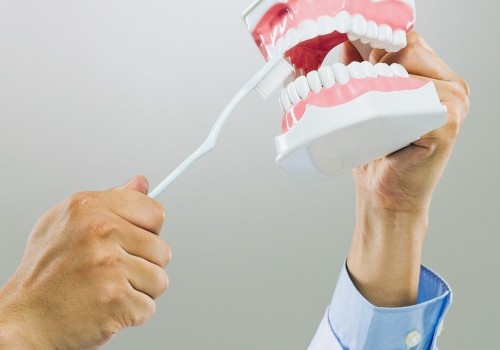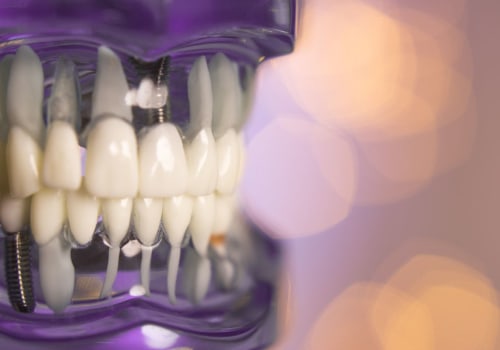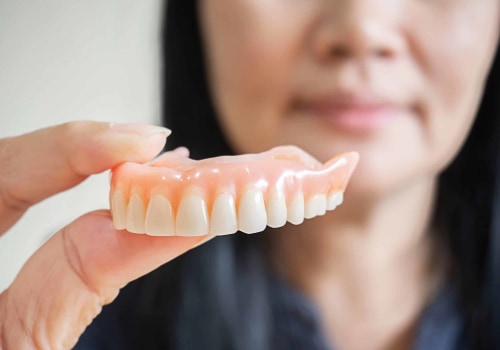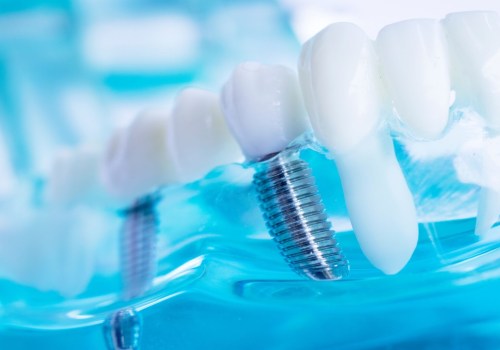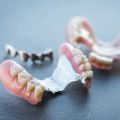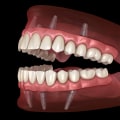Do you have a few missing teeth and are considering getting partial dentures? You're not alone. Missing teeth can not only affect your appearance, but also your ability to speak and chew properly. Fortunately, partial dentures are a great solution for replacing missing teeth and restoring your smile. In this article, we will discuss everything you need to know about replacing a few missing teeth with partial dentures, including the process, benefits, and before-and-after cases.
Whether you are missing a few teeth or are looking for a solution for someone you know, read on to discover how partial dentures can improve your oral health and overall quality of life. Welcome to our guide on replacing missing teeth with partial dentures. If you're missing a few teeth, you may be wondering what your options are. Partial dentures are a popular choice for many reasons, and in this article, we'll walk you through everything you need to know to make an informed decision. First, let's start with the basics.
Partial dentures are removable prosthetic devices that are designed to replace one or more missing teeth. They consist of artificial teeth attached to a pink or gum-colored base that is held in place by clasps or clips that attach to your existing teeth. These dentures are custom-made to fit your mouth and match the color of your natural teeth, making them a discreet and comfortable option for replacing missing teeth. There are two main types of partial dentures: cast metal and acrylic. Cast metal dentures are made from a combination of metal and acrylic, making them strong and durable.
They are also the more expensive option. Acrylic dentures, on the other hand, are made entirely of acrylic and tend to be more affordable. They may not be as sturdy as cast metal dentures, but they can still provide a functional and aesthetic solution for missing teeth. The fitting process for partial dentures typically involves several appointments with your dentist. During the first appointment, your dentist will take impressions of your mouth and send them to a dental lab where your dentures will be made.
At the next appointment, your dentist will make any necessary adjustments to ensure a proper fit. Once your dentures are ready, your dentist will show you how to insert and remove them properly and provide instructions on how to care for them. One of the main benefits of choosing partial dentures is that they can help restore the function and appearance of your smile. They can also prevent your remaining natural teeth from shifting out of place and causing further oral health issues. However, there are also some potential drawbacks to consider.
Partial dentures may feel uncomfortable or awkward at first, and some people may experience difficulty speaking or eating with them. They also require regular cleaning and maintenance to ensure their longevity. To give you an idea of the results you can expect, here are some amazing before-and-after cases of patients who have chosen partial dentures to replace their missing teeth. As you can see, these dentures can make a significant difference in the appearance and function of the smile. If you're considering partial dentures, be sure to discuss your options with your dentist and address any concerns you may have.
With proper care and regular dental check-ups, your partial dentures can provide a lasting solution for missing teeth.
What Are Partial Dentures?
Partial dentures are removable dental prosthetics that are used to replace missing teeth. They are designed to fit around your remaining natural teeth and can be made from a variety of materials, such as acrylic or metal. Partial dentures consist of a gum-colored base that supports replacement teeth, which are typically made to match the color and shape of your natural teeth. Unlike full dentures, which replace all of your teeth, partial dentures are only used to replace a few missing teeth. They are a popular choice for those who have lost multiple teeth but still have some remaining natural teeth.Partial dentures can help restore functionality and appearance to your smile, making it easier to eat, speak, and smile confidently.
The Fitting Process
The fitting process for partial dentures is an important step in the journey to replacing your missing teeth. It is a crucial part of ensuring the dentures fit comfortably and function properly. In this section, we will walk you through what to expect during the fitting process.Initial Consultation
The fitting process typically begins with an initial consultation with your dentist. During this appointment, your dentist will examine your mouth and discuss your specific needs and concerns.They will also take impressions of your mouth to create a custom mold for your partial dentures.
Try-in Appointment
Once the dentures have been created from the mold, you will have a try-in appointment. This is when you will get to see how the dentures fit in your mouth and make any necessary adjustments. Your dentist may also make recommendations for any additional treatments or procedures that may be needed.Final Fitting
After any adjustments have been made, you will have a final fitting appointment. This is when your partial dentures will be permanently placed in your mouth.Your dentist will ensure that they fit comfortably and function properly before sending you on your way. It's important to note that the fitting process may vary slightly depending on your specific situation and the type of partial denture being used. Your dentist will guide you through each step and make sure you are comfortable throughout the process.
Pros and Cons
Partial dentures have become a popular choice for replacing missing teeth, and for good reason. They offer a more affordable option compared to other dental treatments, such as implants, and they can be customized to fit your specific needs. However, like any dental treatment, there are pros and cons to consider before making a decision.Pros:
- Cost-effective: Partial dentures are generally more affordable than other options, making it a great choice for those on a budget.
- Customizable: Partial dentures can be tailored to fit your unique smile, ensuring a natural appearance and comfortable fit.
- Non-invasive: Unlike other treatments that require surgery or drilling into healthy teeth, partial dentures are non-invasive and do not damage your existing teeth.
- Easy maintenance: Partial dentures can be easily removed for cleaning and maintenance, making them a convenient option for many.
- Not as durable: Partial dentures may not last as long as other treatments, such as implants.
- Potential discomfort: It may take some time to get used to wearing partial dentures, and they may cause discomfort or irritation in the beginning.
- Slight changes in speech: As with any new dental treatment, it may take some time to adjust to speaking with partial dentures.
It's important to consult with your dentist to determine the best treatment plan for your specific case. However, with its affordability and customization options, partial dentures can be a great solution for replacing missing teeth and restoring your confidence in your smile.
Types of Partial Dentures
When considering replacing missing teeth with partial dentures, it's important to know that there are different types of partial dentures available. Each type has its own benefits and drawbacks, and the right choice for you will depend on your specific needs and preferences.1.Removable Partial Dentures:
These are the most common type of partial dentures. They consist of replacement teeth attached to a metal or plastic base that matches the color of your gums.This base is held in place by clasps that attach to your existing teeth. Removable partial dentures are easy to clean and can be taken out for sleeping or cleaning.
2.Flexible Partial Dentures:
These dentures are made from a lightweight, flexible material that mimics the look and feel of natural gum tissue. They do not require any metal or clasps, making them less noticeable and more comfortable to wear. However, they may not be as durable as traditional dentures.3.Implant-supported Partial Dentures:
These dentures are secured in place by dental implants that are surgically placed into your jawbone.This type of partial denture is more stable and can provide a more natural look and feel compared to other options. However, they may require a longer healing time and can be more expensive. It's important to discuss with your dentist which type of partial denture would be best for you based on your individual needs and budget. By exploring your options, you can make an informed decision and find the right solution for replacing your missing teeth with partial dentures.
Replacing missing teeth with partial dentures
is a common and effective solution for many people. By now, you should have a better understanding of what partial dentures are, how they work, and if they're the right choice for you.Remember, it's important to consult with your dentist to determine the best treatment plan for your specific needs.
